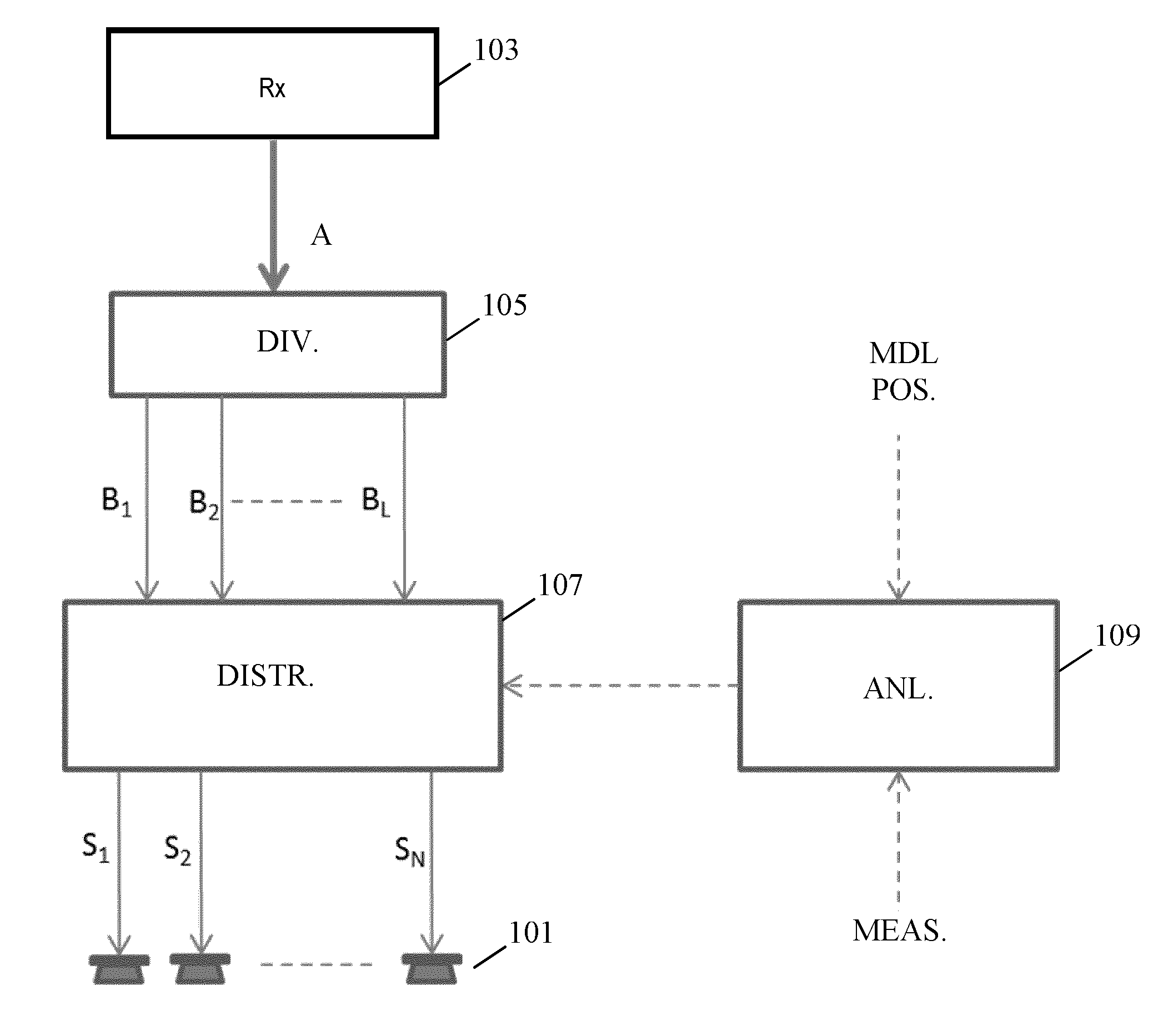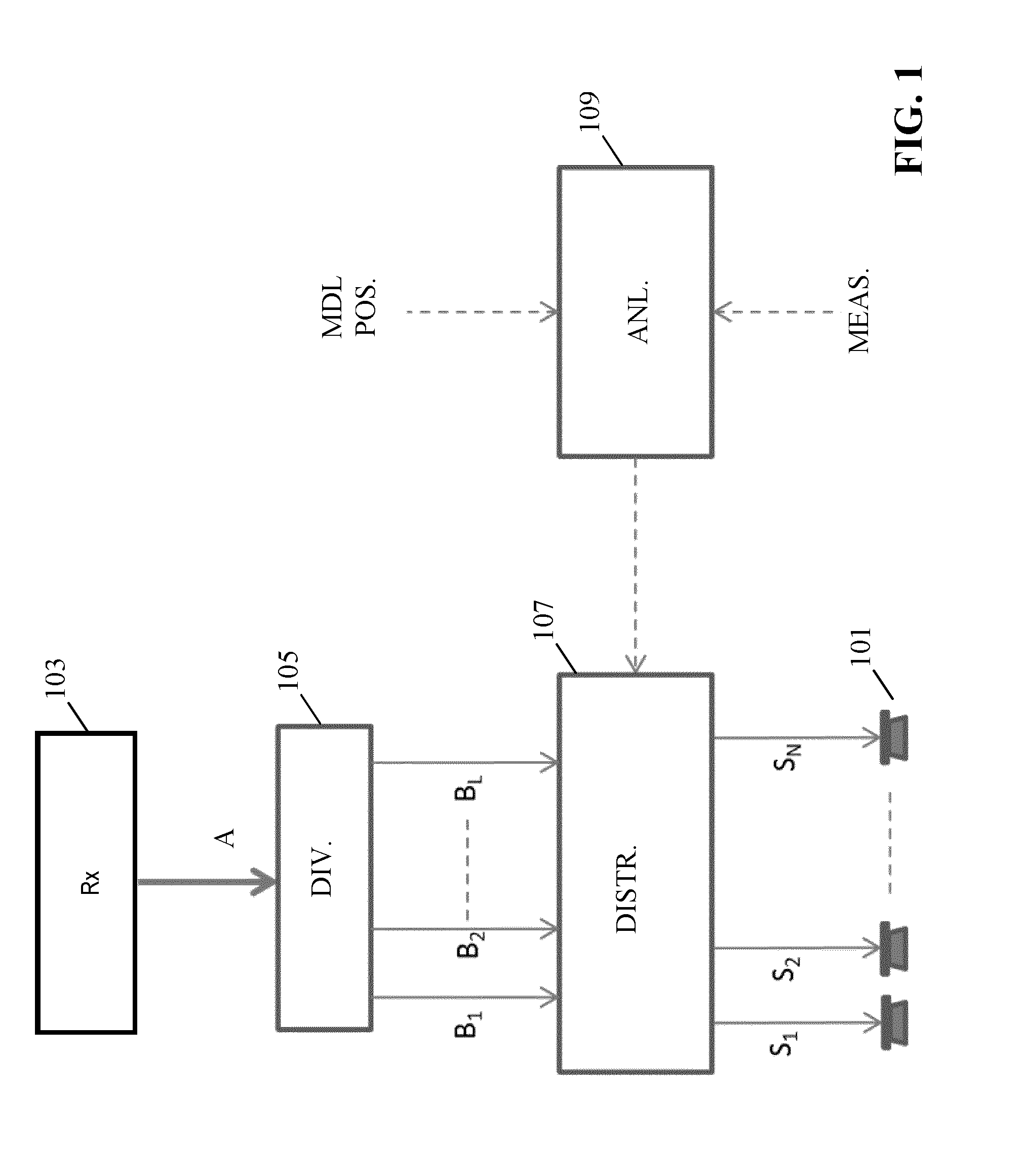Method and apparatus for generating drive signals for loudspeakers
a technology of drive signal and loudspeaker, applied in the direction of electrical apparatus, stereophonic systems, etc., can solve the problems of unbalanced bass response, increased complexity, flexibility and capability of offered solutions, unpleasant perception of so-called “boomy bass”, etc., to improve bass response, improve audio reproduction, and reduce sensitivity to specific loudspeaker positions
- Summary
- Abstract
- Description
- Claims
- Application Information
AI Technical Summary
Benefits of technology
Problems solved by technology
Method used
Image
Examples
Embodiment Construction
[0063]The following description focuses on embodiments of the invention applicable to a system for rendering an audio signal using e.g. a surround sound loudspeaker setup with a plurality of speakers.
[0064]FIG. 1 illustrates an example of an audio apparatus for generating drive signals S1-SN for a plurality of speakers 101.
[0065]The drive signals S1-SN are generated from an input audio signal. The following description will for clarity and conciseness focus on the input audio signal being a single audio signal which is not associated with any specific position. However, it will be appreciated that the audio signal may for example be a component / single channel signal of a spatial multi-channel signal such as a 5.1 or 7.1 surround sound signal.
[0066]In the example, the loudspeakers 101 may for example be loudspeakers of a surround sound setup and the audio signal which is processed may be a low frequency signal, such as a Low Frequency Effect (LFE) channel. Thus, the following descrip...
PUM
 Login to View More
Login to View More Abstract
Description
Claims
Application Information
 Login to View More
Login to View More - R&D
- Intellectual Property
- Life Sciences
- Materials
- Tech Scout
- Unparalleled Data Quality
- Higher Quality Content
- 60% Fewer Hallucinations
Browse by: Latest US Patents, China's latest patents, Technical Efficacy Thesaurus, Application Domain, Technology Topic, Popular Technical Reports.
© 2025 PatSnap. All rights reserved.Legal|Privacy policy|Modern Slavery Act Transparency Statement|Sitemap|About US| Contact US: help@patsnap.com



